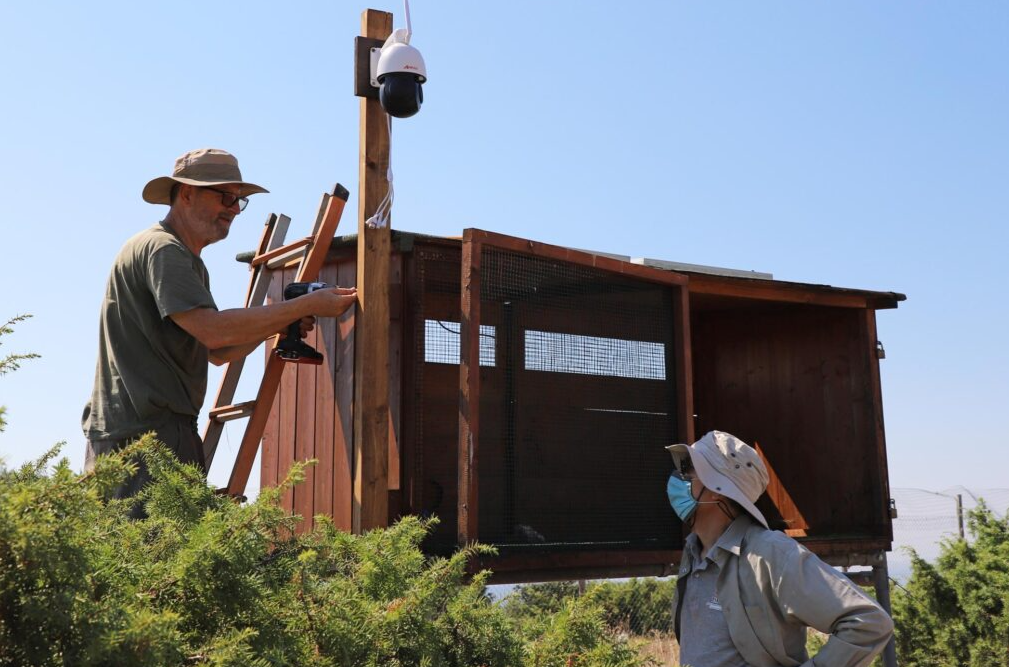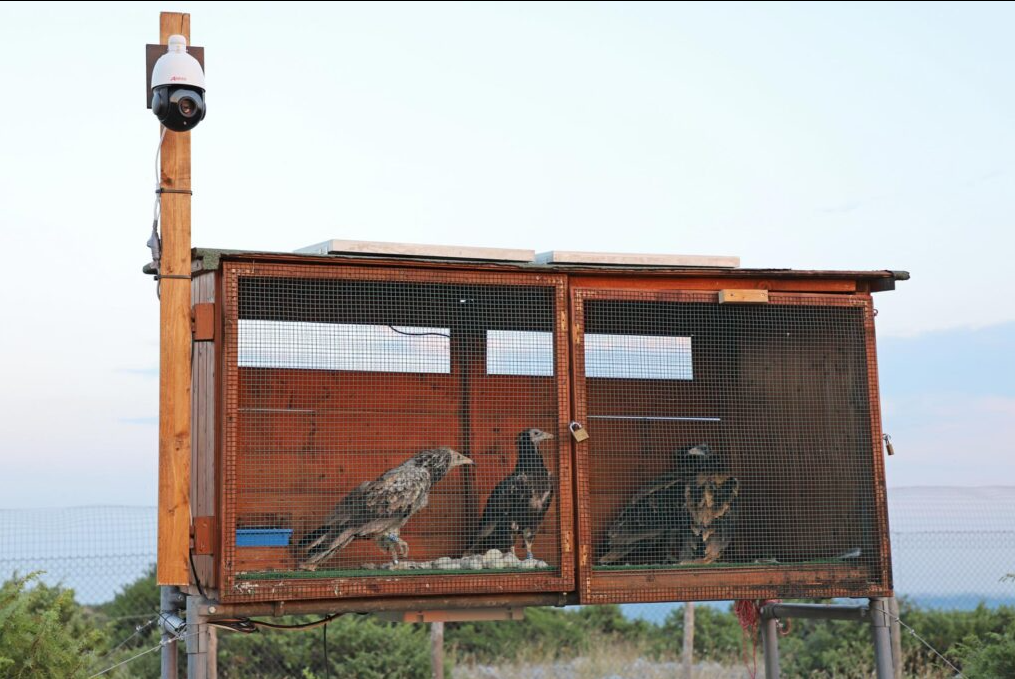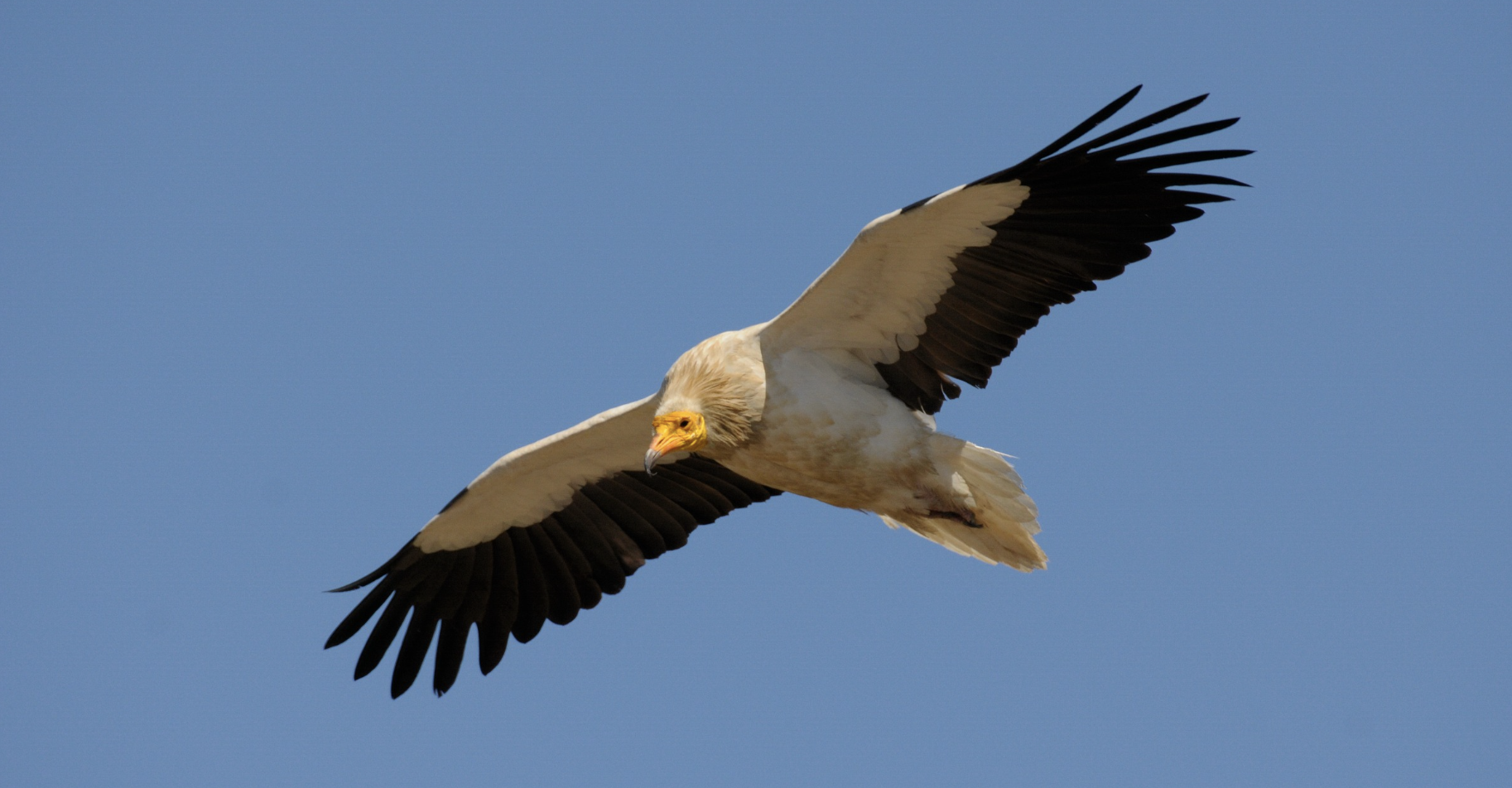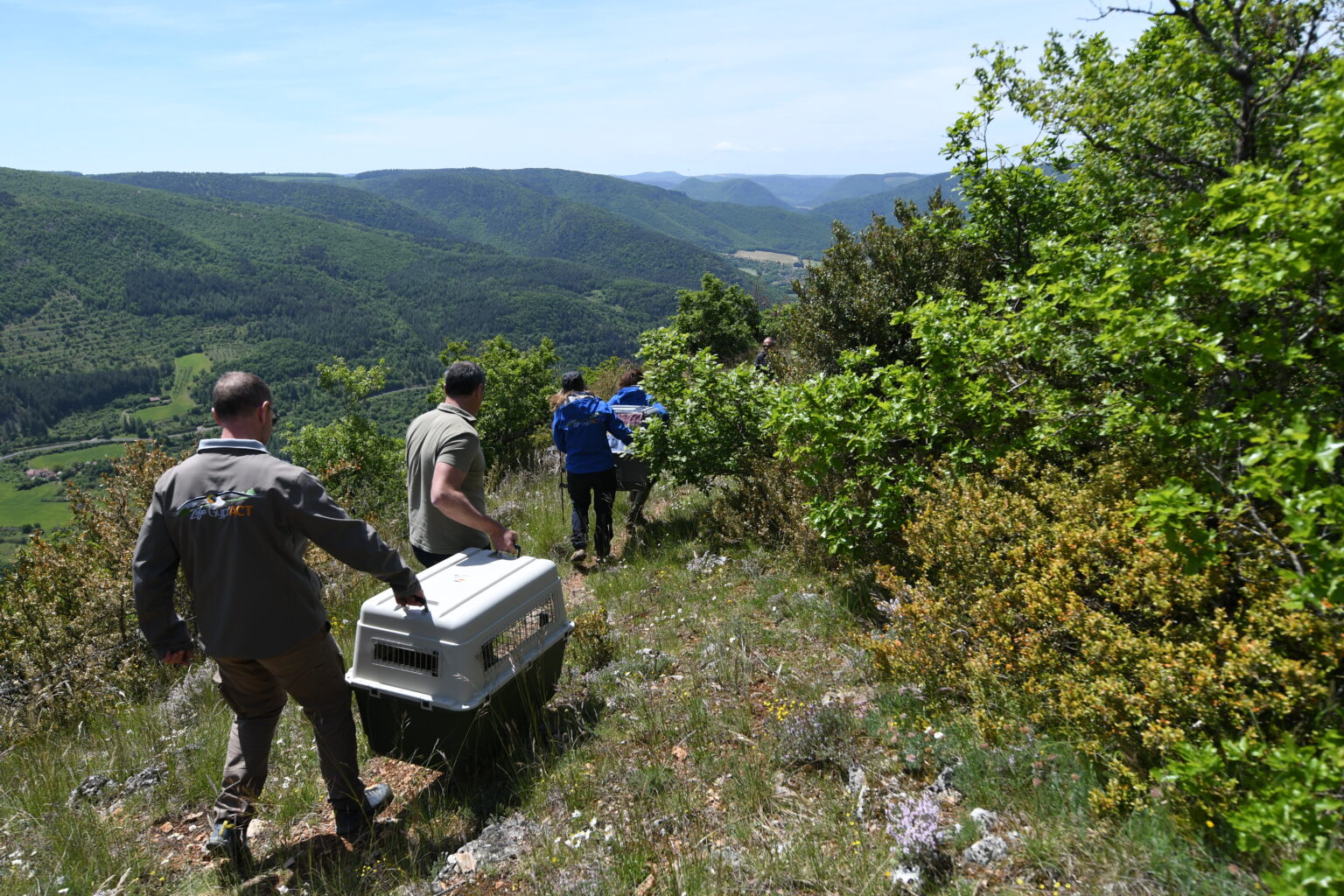
Our Italian colleagues have released four more young and captive-bred Egyptian Vultures in Basilicata on 15 August 2020! CERM Association Centro Rapaci Minacciati and ISPRA Istituto Superiore per la Protezione e la Ricerca Ambientale carried out these releases as part of theLIFE Egyptian Vulture project to support the Italian population of this species, which dramatically dropped over the last few years. The vultures were equipped with satellite transmitters provided by us here at the Vulture Conservation Foundation (VCF) to monitor their movements and help tackle threats.
Meet Fabio, Zoe, Clint and Birba
The vultures released hatched in captivity at CERM Association Centro Rapaci Minacciati at different periods. Fabio hatched in 2018, Zoe in 2019 while Clint and Birba in 2020. The project releases birds of different ages to test and understand which age offers the greatest chance of survival and so help achieve better restocking results in the long-term.
Releasing the Egyptian Vultures
A LIFE Egyptian Vulture project team placed the four vultures in an aviary located at a strategic position in Murgia Materana Natural Park to help them acclimatize to their new home before exploring it themselves. The four young vultures remained in the aviary for five days, with the necessary food provided to them. During this time, the project team was continually observing them from the field and also through the video surveillance system installed. This same aviary welcomed ten other Egyptian Vultures before in 2018 and 2019 for the same purpose, to release them into the wild and boost the Italian population.
When the aviary opened five days later on 15 August, Zoe, Fabio and Birba immediately took off. Clint, who is the youngest of the four, remained for another day in solitude before conquering freedom.
Monitoring the vultures
Ahead of their release, the four vultures were equipped with GPS tags provided by the VCF. These tags allow ISPRA, Biodiversità sas and the CERM Association to track their real-time movements of these birds via GPS/ GSM data, which also helps find the birds in the field and observe them directly when necessary, especially at areas that pose several threats.
Improving the chances of survival
The project undertakes several conservation measures to help the released birds acclimatize to the wild and increase their chances of survival. To improve food availability, they established a feeding station at Murgia Materana Natural Park near the release site, as well as in other areas that are frequented by young vultures once free. This actions further helps facilitate the adaptation of captive-bred birds into the wild following their release.
To prevent disturbance and poaching incidents, the Forestry Carabinieri carry out control activities of the area under an agreement with ISPRA. During migration and if birds visit regions known for poaching, the project intensifies the monitoring of the released Egyptian Vultures. The Trapani province, for instance, is at high risk of poaching, and due to this threat, in September 2018 the project lost a released captive-bred Egyptian Vulture named Clara that only spent one month in the wild following her release in Basilicata.
We wish safe travels to these four vultures and a long future in the wild!
Stay tuned with Europe’s vulture news by signing up to our newsletter!










